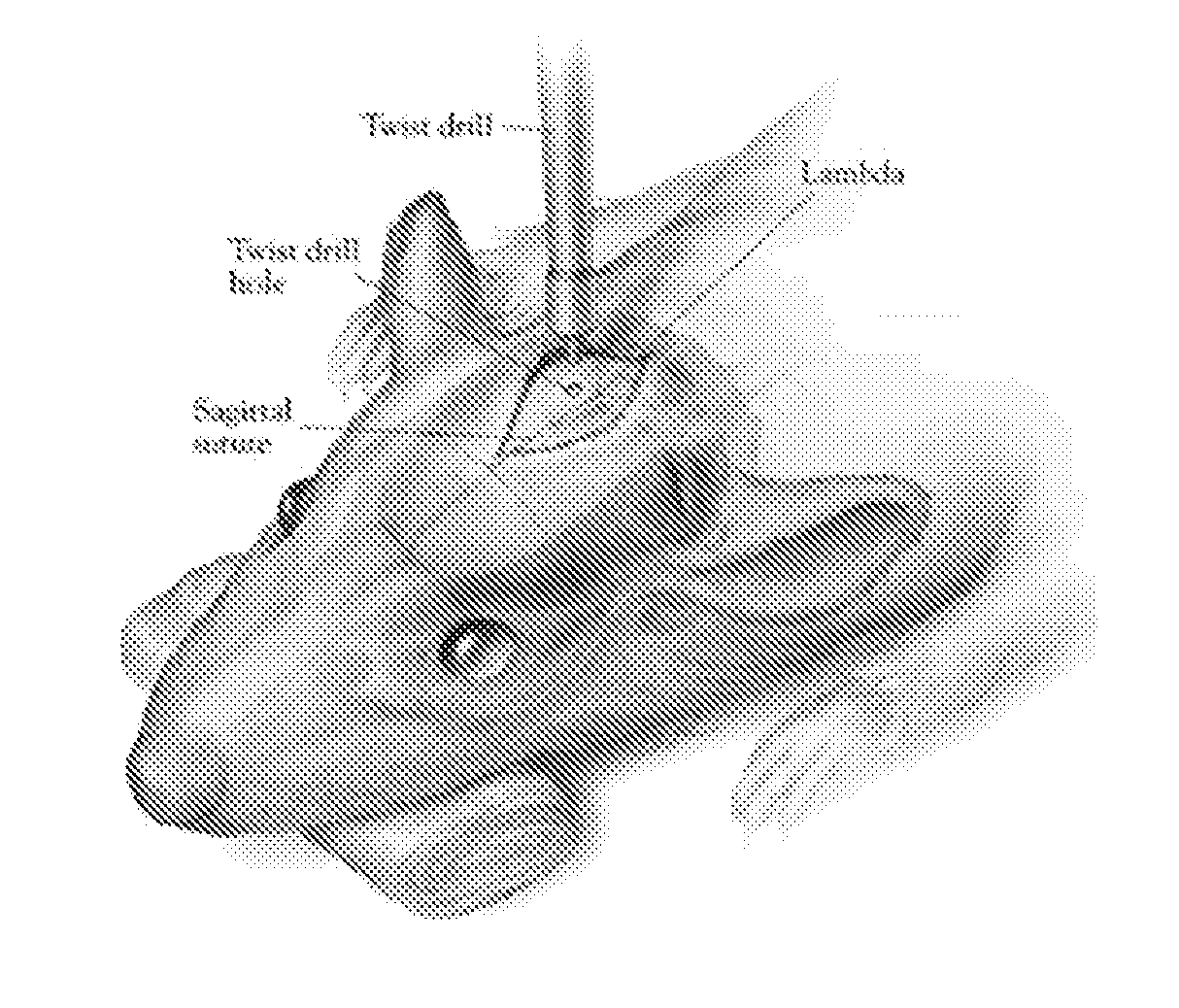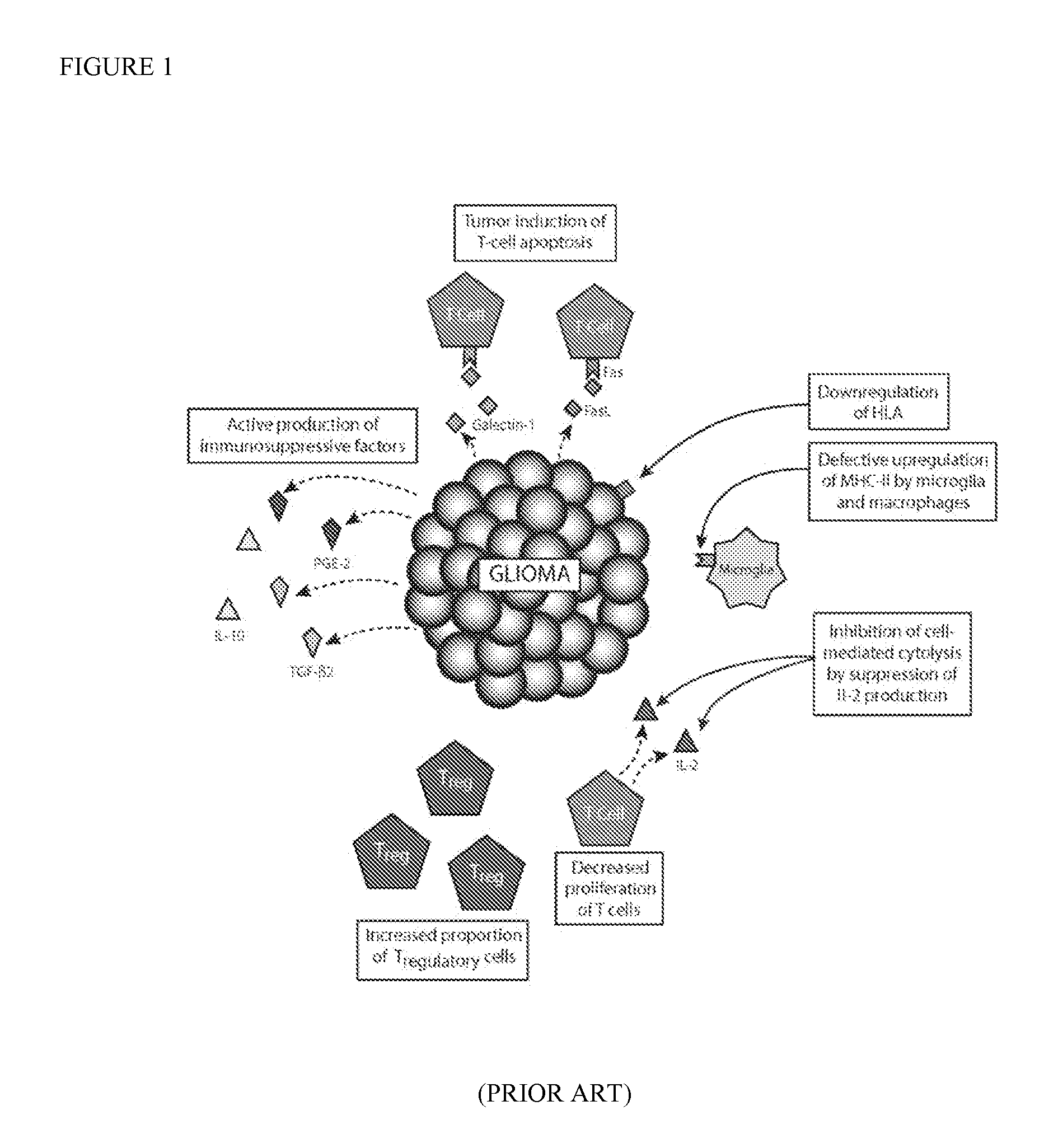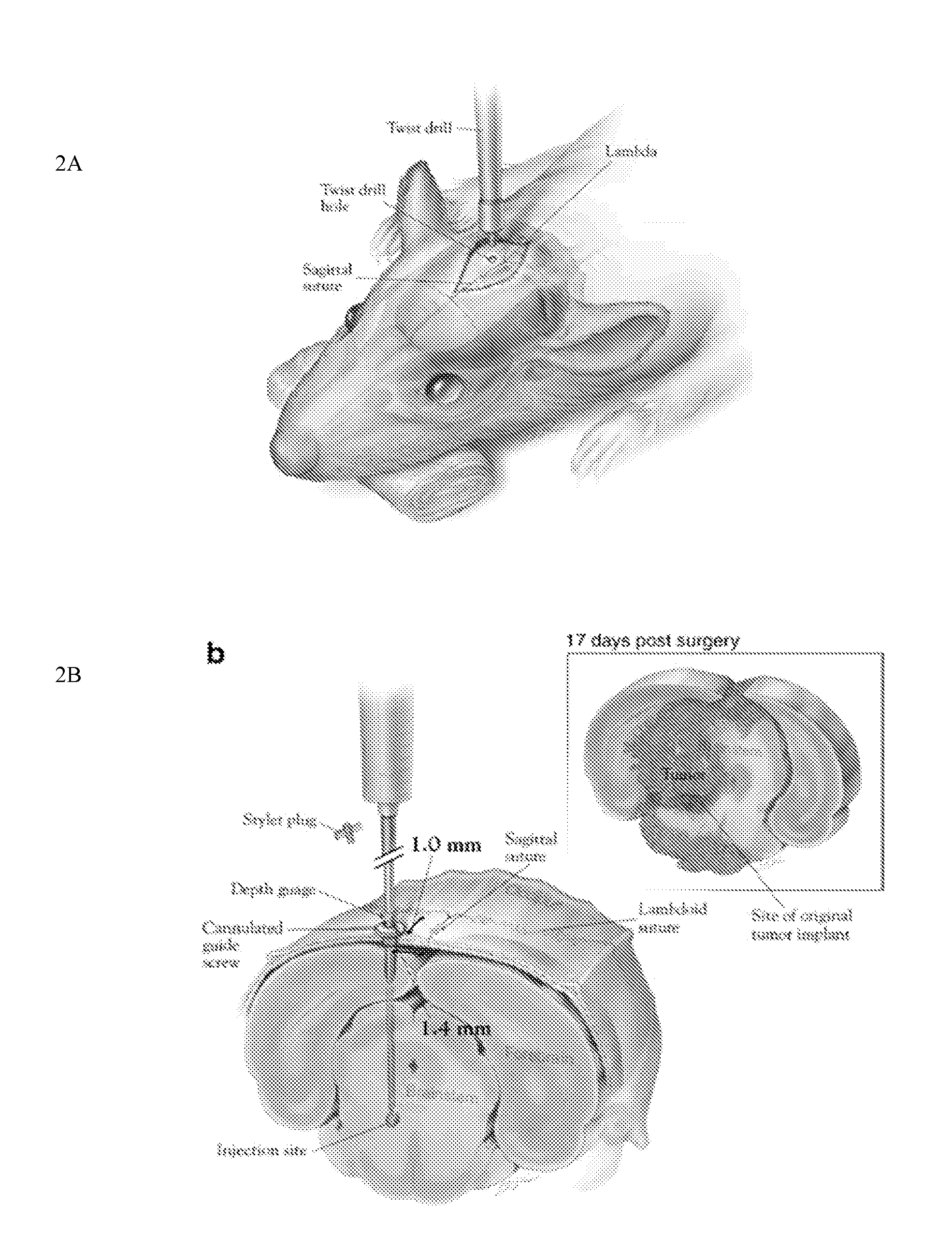Focused radiation for augmenting immune-based therapies against neoplasms
a technology of immune-based therapies and focused radiation, which is applied in the field of focused radiation for augmenting immune-based therapies against neoplasms, can solve the problems of current immunotherapy approaches that have yielded disappointing results, current radiation strategies, limitations, etc., and achieve the effect of inhibiting, counteracting, or reducing the immunosuppressive effect of a tumor in a subj
- Summary
- Abstract
- Description
- Claims
- Application Information
AI Technical Summary
Benefits of technology
Problems solved by technology
Method used
Image
Examples
example 1
[0135]Tumor models. Intracranial tumor implantation of 130,000 GL261 cells transfected with luciferase was performed into C57 / BL6 mice (FIGS. 2A and 2B). By day-10 post-implantation, histology showed a tumor visible on H&E stains, measuring approximately 1-2 mm in diameter (FIGS. 2C and 2D).
example 2
[0136]Combining the immunotherapeutic agent anti-PD-1 antibody with radiation. On day-7 post-implantation, mice underwent bioluminescent imaging to assess tumor growth, and were stratified equally into one of four treatment arms: control, radiation, anti-PD-1 antibody, and radiation plus anti-PD-1 antibody. Anti-PD-1 antibody was given on days 10, 12, and 14 post-implantation, at dose 200 μg / mouse. Radiation therapy was given with a unique small animal research radiator platform (SARRP), which was developed by physicists at Johns Hopkins Medicine, and is a small-scale model of linear accelerators currently used to treat patients in clinics. The SARRP has a CT-scanner built into the radiator, which is able to perform CT scan to identify anatomy, and then deliver the radiation while the mouse is in the same position. Using the SARRP, the burr-hole from the intracranial implantation can be identified and a stereotactic 3-mm radiation beam can be targeted to 10 Gy centered on the tumor ...
example 3
[0139]Immunologic studies. To assess the immunologic status in the brain that correlates with the different survival outcomes observed in the different treatment arms, mice were sacrificed on day-21 post-implantation. Brain / tumor, cervical lymph nodes, and spleen were harvested and assessed for their immunologic parameters via flow cytometry. Mice treated with both radiation and the immunotherapeutic agent, anti-PD-1 antibodies, had the highest number of cytotoxic T-cells (CD8+ / IFNγ+ / TNFα+ cells) in the brain compared to mice from the other groups, especially when normalized to tumor size (FIG. 5A). Fewer regulatory T-cells (CD4+ / FOXP3+ cells) were observed in the mice receiving radiation plus anti-PD-1 antibodies (FIG. 5B). The ratio of cytotoxic to regulatory T-cells was highest in the mice receiving both radiation plus antibody (FIG. 5C).
[0140]To test for immunologic memory, mice who were “cured” of the brain tumor (alive at least 90-days post-implantation, which only occurred in...
PUM
| Property | Measurement | Unit |
|---|---|---|
| time | aaaaa | aaaaa |
| diameter | aaaaa | aaaaa |
| heterogeneity | aaaaa | aaaaa |
Abstract
Description
Claims
Application Information
 Login to View More
Login to View More - R&D
- Intellectual Property
- Life Sciences
- Materials
- Tech Scout
- Unparalleled Data Quality
- Higher Quality Content
- 60% Fewer Hallucinations
Browse by: Latest US Patents, China's latest patents, Technical Efficacy Thesaurus, Application Domain, Technology Topic, Popular Technical Reports.
© 2025 PatSnap. All rights reserved.Legal|Privacy policy|Modern Slavery Act Transparency Statement|Sitemap|About US| Contact US: help@patsnap.com



